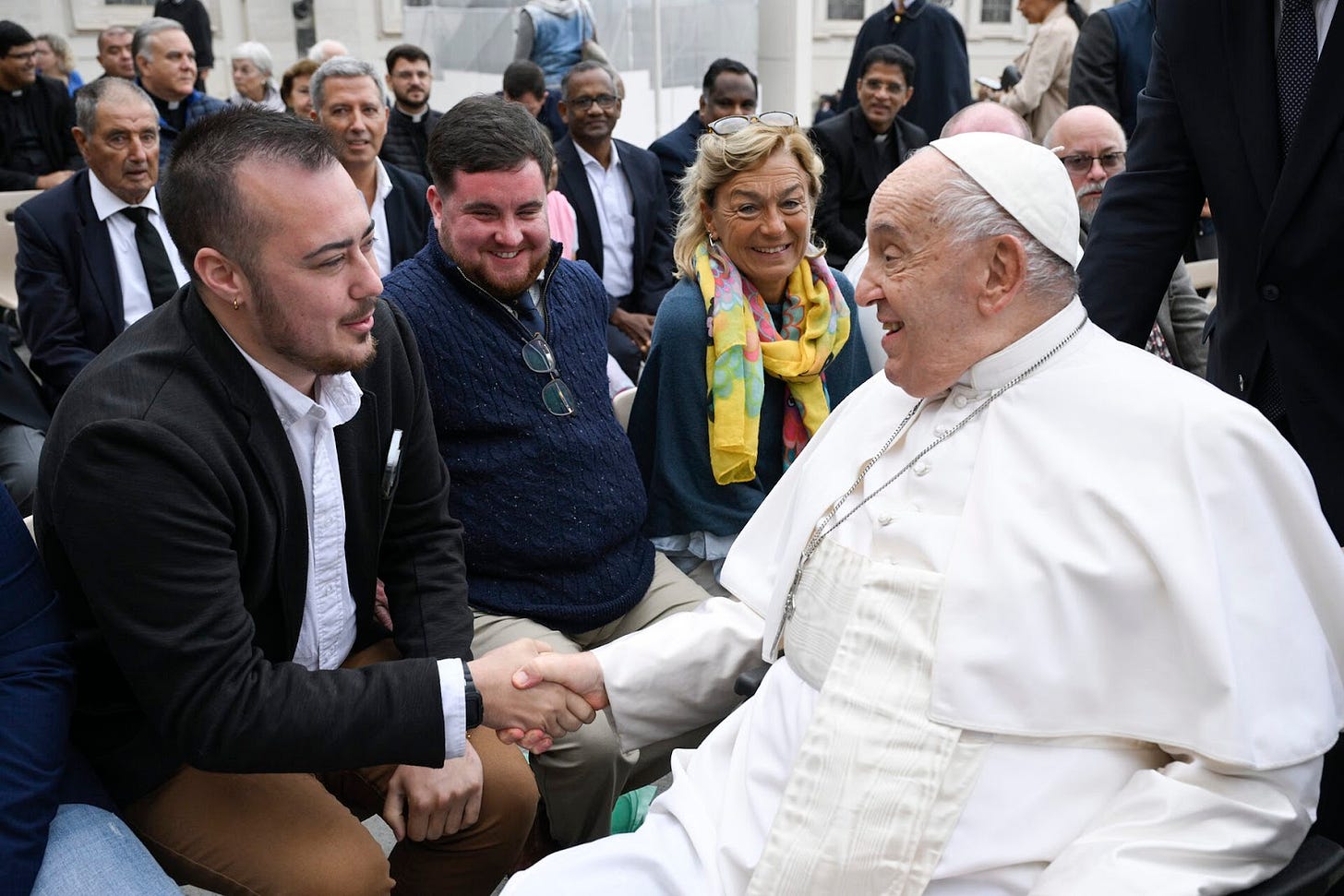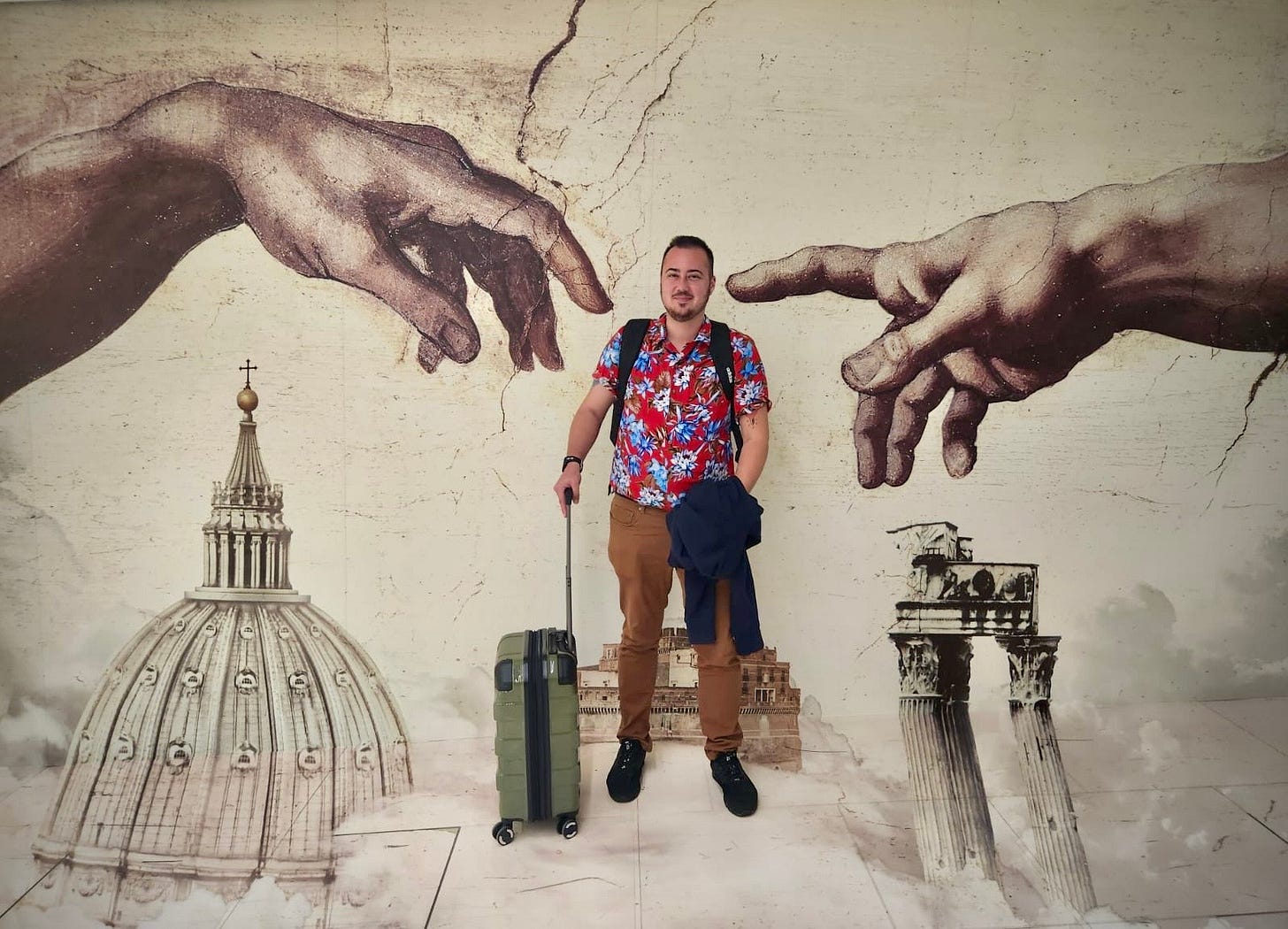I met Pope Francis
I have been Catholic my entire life, but I often say that my connection to my faith never really flourished until after I began my gender transition. This journey of self-discovery and acceptance not only transformed my understanding of spirituality but also brought me to a defining moment: meeting Pope Francis last week. This encounter deepened my appreciation and love for my Catholic faith even more, especially in light of the long struggle it took to get here.
In the National Catholic Reporter, read my article “Meeting the pope as my true self: A transgender man's encounter with Pope Francis.”
Growing up, Catholic doctrine and teachings were important, but there were also rules about looking the part. And I did not look the part. When Sundays rolled around and cutesy little dresses were brought out to me, I tore them instead of allowing the fabric to touch my skin. As an adult I often just tried to compromise, shopping in the furthest corner of the women’s section where it started to look more masculine. But the emphasis on looks and appearance never sat right with me. Weren’t the gospels about loving people no matter what?
Appearances and looks mattered a lot to the conservative Catholics around me. The preoccupation I observed in conservative faith communities with someone’s gender presentation and sexual orientation did not reflect the values of love and welcome that I heard preached by these very same people. It seemed they would rather twist their Christian faith into an unrecognizable shape than willingly accept, welcome, and love LGBTQ people. This was a deal breaker for me, and it left me yearning for a faith that truly reflected the love and acceptance I believed in.
Flash forward to October 23, 2024–where I found myself sitting in a general audience in Rome, the Vatican, meeting Pope Francis. I grasped his hand and told him in Spanish, “I am a transgender man and friend of Fr. James Martin.” He beamed in response, demonstrating more ability to be loving and welcoming than so many Catholics I had encountered before. That this elderly Argentinian man sitting at the very heart of Catholicism—literally in the chair of St. Peter—could welcome not only me but many transgender people and listen attentively to the concerns of our community means that there’s no excuse for coldness or rejection. Jesus himself would likely not recognize those who reject others as his followers. There is no asterisk after the gospel words, “Love your neighbor.”
Leading up to the moment when I spoke to the pope, I reflected on his pastoral response to the transgender community. In a recent 80 minute meeting with New Ways Ministry, he heard from a diverse group of LGBTQ community members. Not only has he constantly embraced the opportunity to learn more, he is constantly open to meeting more members of the LGBTQ community–members of the community such as myself.
Francis’s example of inclusion and welcome still desperately needs to spread in the church today. We all benefit from hearing the many voices that make up the human family, and in allowing their words to transform us for the better. God has given us an extraordinary and beautiful gift in the form of diversity. The spiritual gift of diversity is what allows all the pilgrims who come from every corner of the globe to see the pope in Rome to unite their many different voices and languages together into one prayer: the prayer of love that is where God is found.
As the church moves forward, we must take concrete steps to involve, support, and uplift the historically marginalized members of our communities. There have been so many important issues raised through the Synod on Synodality and we must allow these issues to move us. We must elevate and re-empower the voices of those who have been violently silenced. We must allow ourselves to be changed, and to grow in response to the divine invitation present in “the other.”
My encounter with Pope Francis reaffirmed my belief that the essence of our Catholic faith lies not in rigid rules or appearances, but in radical love and acceptance. It is essential for the church to embrace the richness of its diverse community, recognizing that we all benefit from the gifts of connection and collaboration. By actively dismantling barriers that marginalize LGBTQ individuals and others, we can ensure that our communities reflect the inclusive spirit of the Gospel and the loving example of Jesus.
In opening our hearts to this growth and transformation, we can create a church that embodies the profound message of unity and compassion at its core. Meeting Pope Francis was not just an opportunity; it was a commitment to stand alongside those who are already doing the vital work of inclusion, and a visual message that underscores how important that inclusion is. Together we can all inspire a movement toward love, understanding, and acceptance, inviting all voices to share in the sacred and personal journey of faith.



